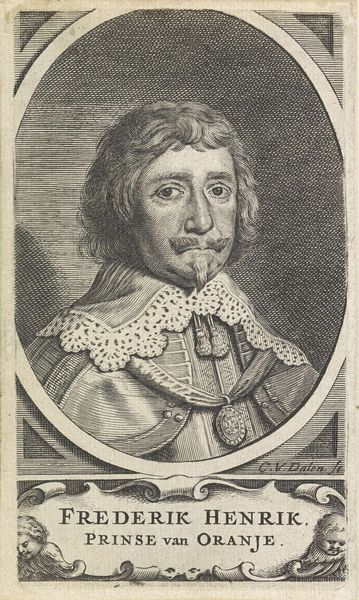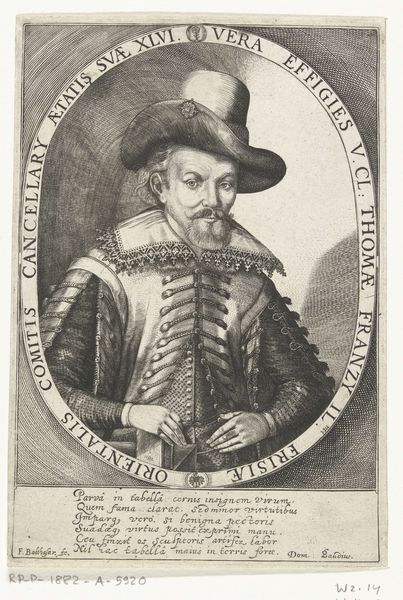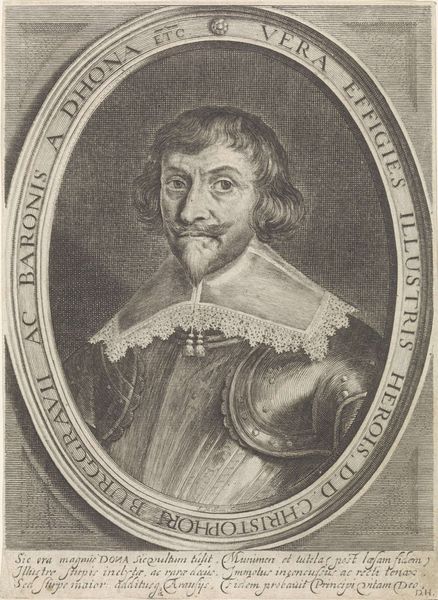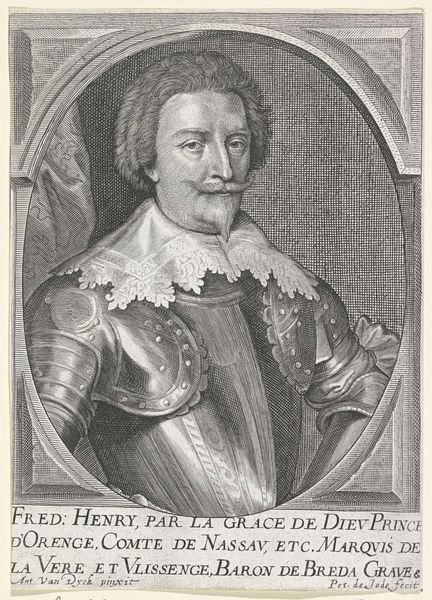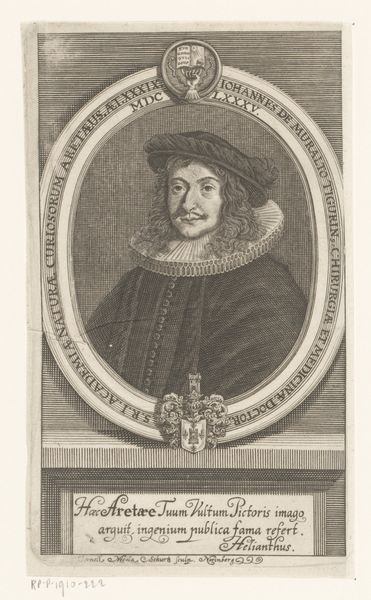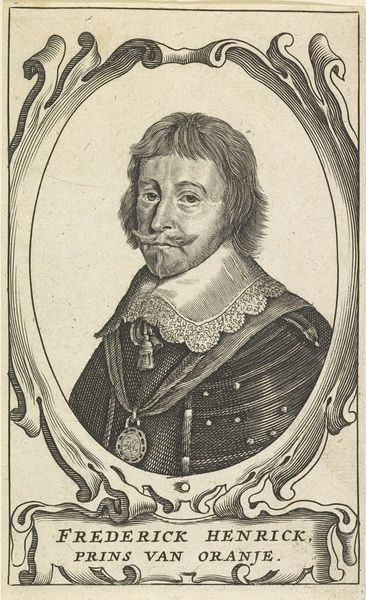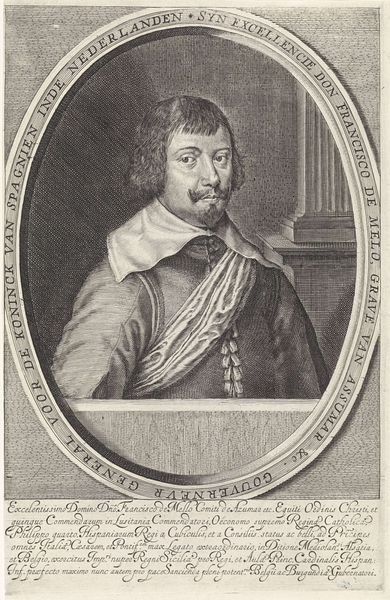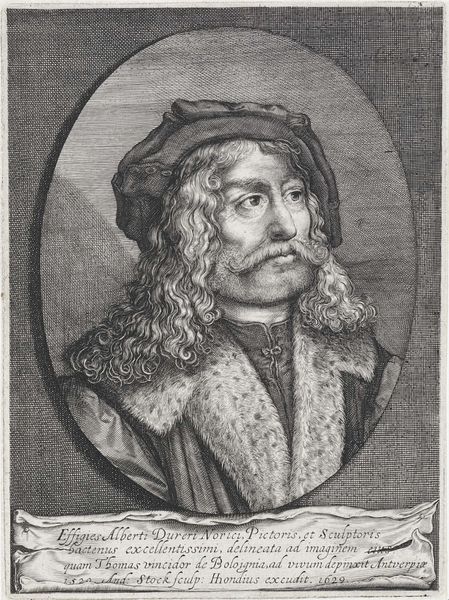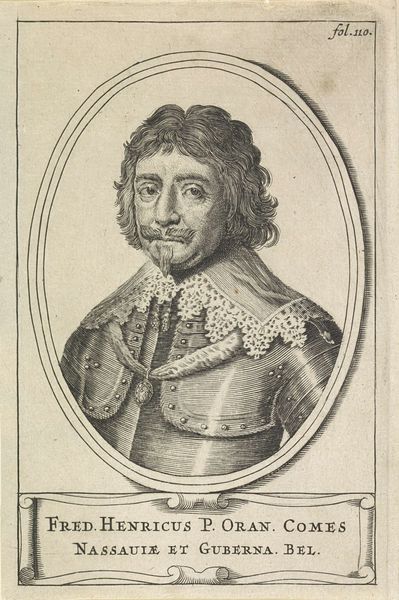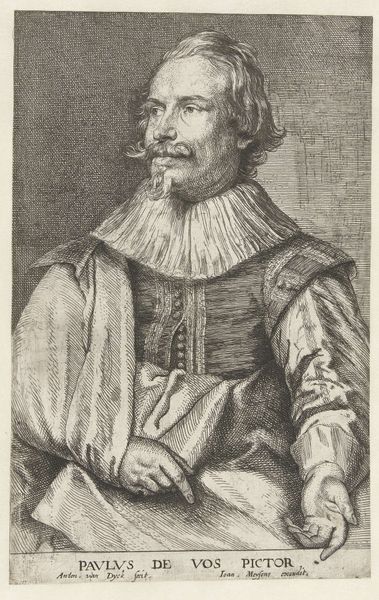
engraving
#
baroque
#
old engraving style
#
engraving
Dimensions: height 176 mm, width 121 mm
Copyright: Rijks Museum: Open Domain
Curator: Here at the Rijksmuseum, we're standing before a work by Cornelis Meyssens: "Portret van Livinus van Zeele," dating roughly from 1650 to 1660. It's an engraving. Editor: My first impression is that there is a subtle somberness in his gaze and this feels typical of Baroque-era portraiture. Even the oval frame around him seems to set a quiet, contemplative mood. Curator: Absolutely. Consider the social context for such a print. Engravings like this were often commissioned to commemorate or promote an individual. The inscription below even alludes to Van Zeele's character and wit. The text praises the portrayed individual's artistic or intellectual endeavors and their nature reflecting artistic skills. We see a transition here where craft is a form of production that leads to promotion of character, nature, and skill. Editor: I see this more in terms of how the engraver uses symbols. Look at the laurel-like oval border–traditionally, that speaks to enduring fame and victory. The subject’s clothing – it projects a specific image of someone, intellectual, but also connected to the material world. There’s a visual story being told here, layers of symbolic meaning meant to convey certain ideas about this man, Livinus van Zeele. Curator: That visual story is crafted very carefully through the engraving process itself. Meyssens used line work and hatching techniques to model form and create tonal variation, all with the goal of representing character. The materiality of the ink, the paper, all become instruments in service to social performance and documentation. Consider also the labor involved in this production– engraving, while technically reproducible, required highly skilled craftspeople. Editor: Yes, the labor matters, but so does the end impact. The dark ink against the bright paper creates such a striking contrast, a dramatic spotlight effect highlighting Van Zeele’s face, as if revealing some hidden truth about his personality. It captures your attention and directs your gaze, urging you to engage with the sitter. Curator: It also represents the printing technologies and techniques employed during the time. It highlights artistic skills from the 17th century with a combination of craftsmanship and manual skills to make character visible in reproducible printed forms. Editor: Exactly! Through symbolism and craft, memory is made. This engraving speaks volumes, both about Van Zeele, and the time he inhabited. Curator: Yes, by looking at process and intent, we also understand labor, social promotion, and the value placed on craft in portraiture in this period.
Comments
No comments
Be the first to comment and join the conversation on the ultimate creative platform.
